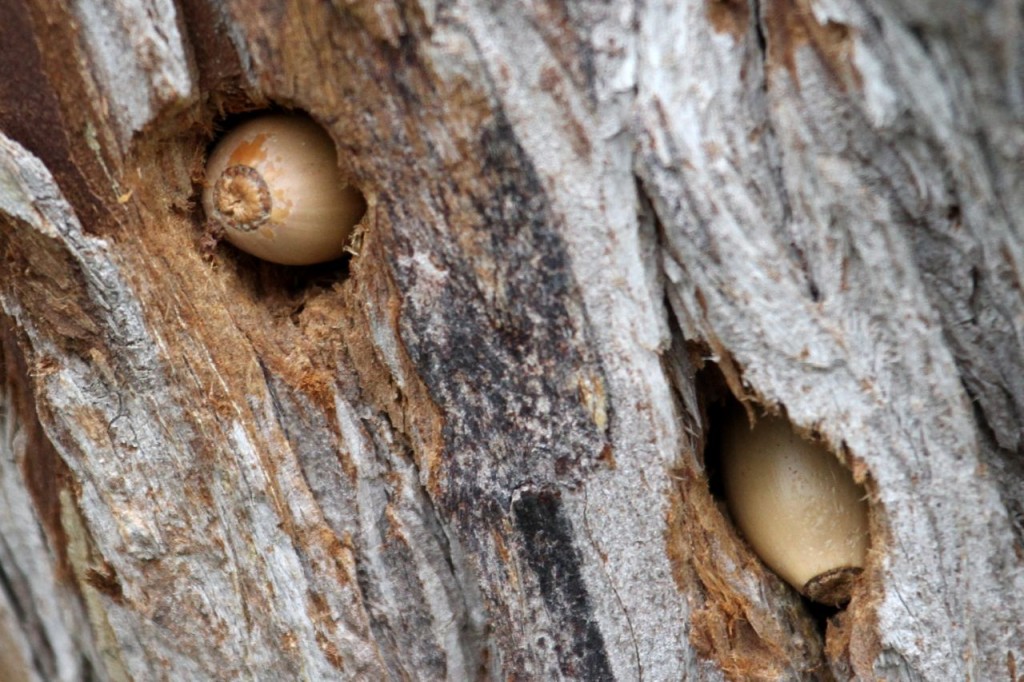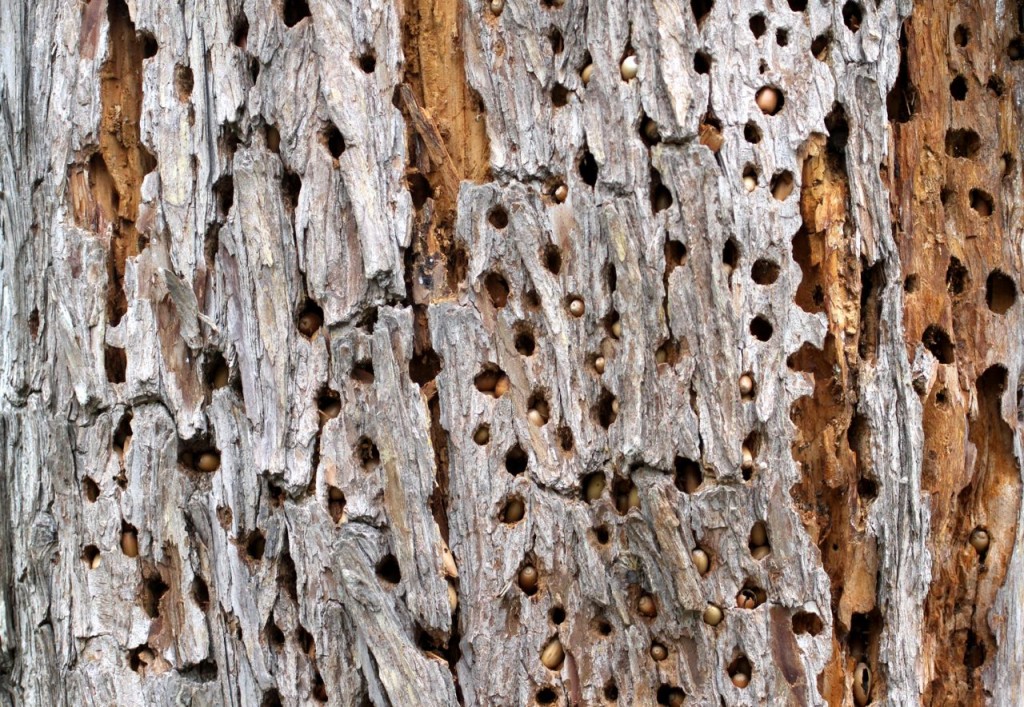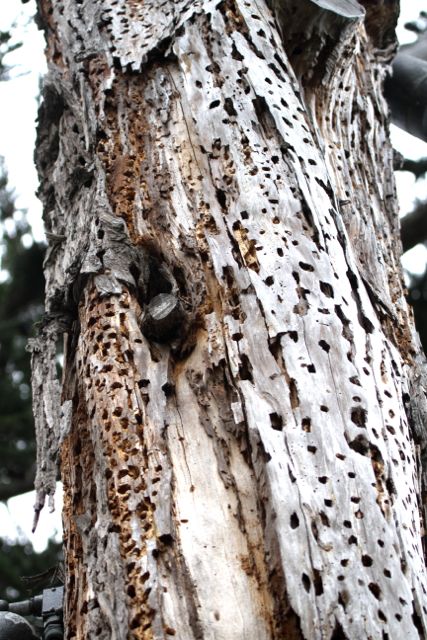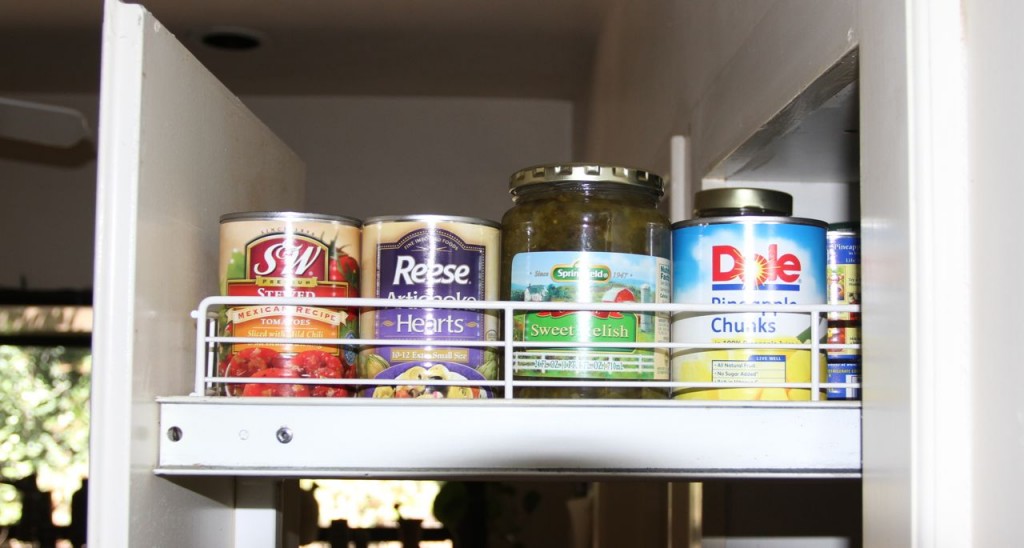 Gee, humans are smart. Never mind the moon landing, today we have these fantastic slide-away pantries to squirrel our stuff away. The ultimate in mall to wall storage efficiency.
Gee, humans are smart. Never mind the moon landing, today we have these fantastic slide-away pantries to squirrel our stuff away. The ultimate in mall to wall storage efficiency.
Then again, maybe that honor should go to the first of two non-human tidy housekeepers that crossed my path this week: the Acorn Woodpecker (Melanenpes formicivorus):
I’ve written about woodpeckers before – HERE. But this example, snapped in Santa Barbara Zoo (of all places, given the birds are all over the area) is the best example of an acorn-saturated tree trunk I’ve seen. Acorns placed by woodpeckers into holes excavated by woodpeckers – for later consumption.
Tidy Trashlines
Next up, the Trashline Orb Weaver spider (genus Cyclosa). I came across this guy on a pick-your-own blueberry adventure at nearby Gaviota, strung across the bushes. (And vulnerable to accidental picking – it’s likely I ate one of these.):
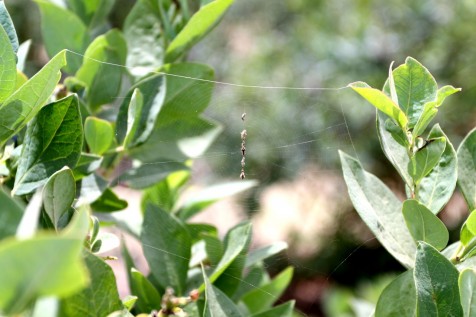
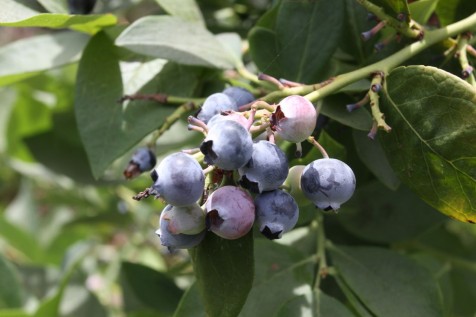
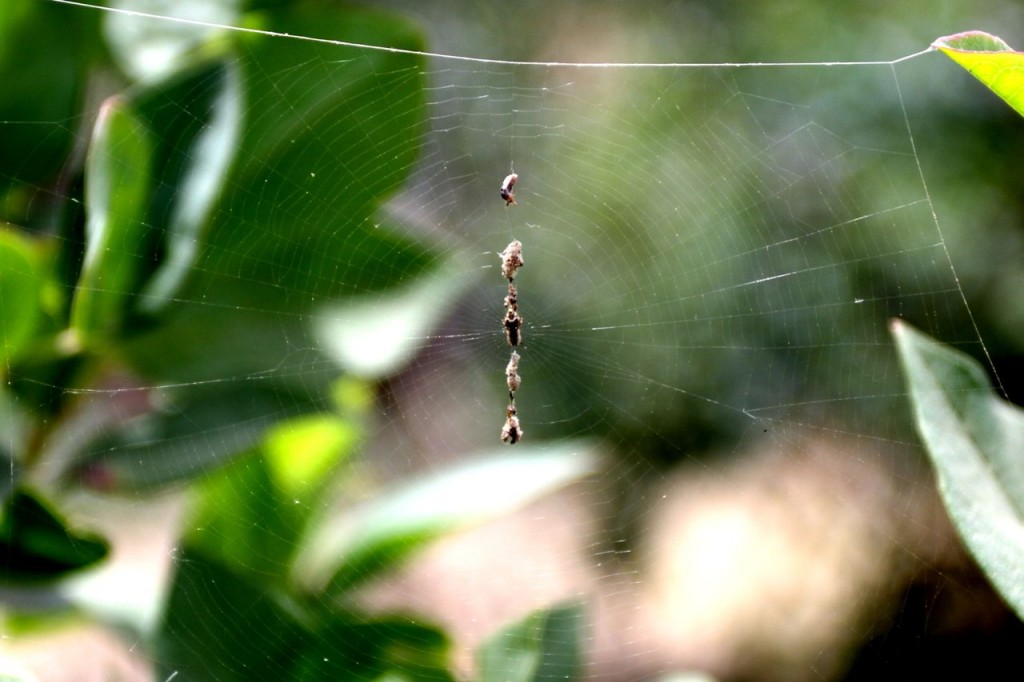
The spider is the darker lump at the center of the web, hidden among the string of five packages: its ‘trash’, made of bits of old victims, egg sacs, plant material and such like caught in the web. I’d never seen one before, but now I now about them I’ve spotted a couple more in other locations. Here’s one, startled to life below a vertical, albeit incipient, trashline:

Left alone, they pull in their legs and try to look like a piece of trash:
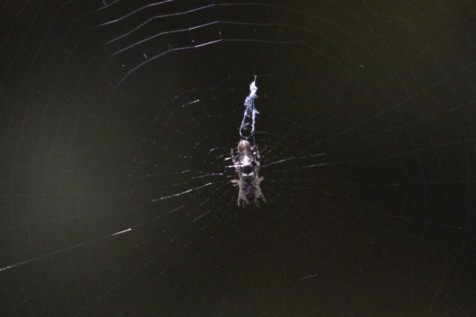
Incidentally, in the top picture you can see a visibly thicker, extra-strong, ‘cross-beam’ section of webbing, the stabilimetum, on which the main web and trashline hangs.
Why go to the trouble? Spider researchers reckon the trashline disguises the spider from approaching food insects, which can then be grabbed more easily; but also hides it from predators ~ a strategy more effective against birds than wasps (ref 1).
Yeah, we’re smart – in some things; but we’re not the whole story by a long shot.
Of related interest
‘Decorative Spider Webs Attract Dinner‘ (BBC item from 20/9/12)
References and further reading
1. Detritus decorations of an Orb-Weaving spider (Cyclosa mulmelnensis): for food or camouflage ? Tan E. & Li D., Journal of Experimental Biology, 2009, DOI 10.1242/jeb 030502 (pdf here)
3. Trashiline Orb Weaver – A cool spider (abundantnature.com)
Photos copyright Tim Jones
